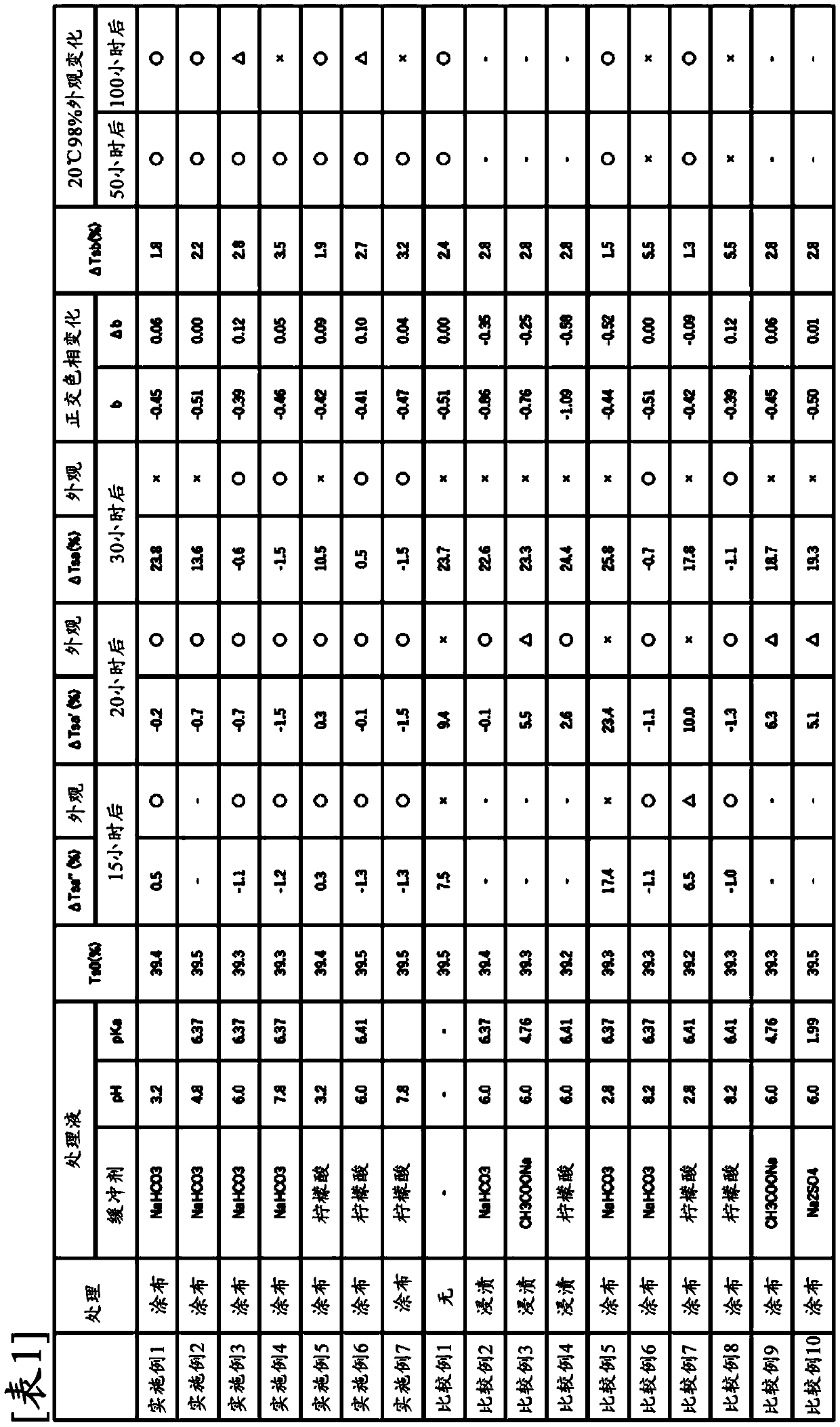Method for producing polarizer
A manufacturing method and technology for polarizers, which are applied in polarizing elements, optics, instruments, etc., can solve the problem of easy discoloration of polarizers, and achieve the effect of simple and low-cost manufacturing.
- Summary
- Abstract
- Description
- Claims
- Application Information
AI Technical Summary
Problems solved by technology
Method used
Image
Examples
Embodiment 1
[0077] As the thermoplastic resin substrate, an amorphous isophthalic acid-copolyethylene terephthalate (IPA-copolyPET) film (thickness: 100 μm) having a water absorption rate of 0.75% and a Tg of 75° C. was used. Corona treatment is performed on one side of the substrate, and a 9:1 ratio of polyvinyl alcohol (polymerization degree 4200, saponification degree 99.2 mol%) and acetoacetyl-modified coating is applied on the corona-treated surface at 25°C. PVA (polymerization degree 1200, acetoacetyl group modification degree 4.6%, saponification degree 99.0 mol% or more, Nippon Synthetic Chemical Industry Co., Ltd., trade name "GOHSEFIMER Z200") aqueous solution was dried to form a PVA-based resin layer with a thickness of 11 μm , making a stack.
[0078] The obtained laminate was stretched 4.5 times in an air atmosphere at 140° C. in a direction perpendicular to the longitudinal direction of the laminate using a tenter stretcher (stretching treatment).
[0079] Next, the laminat...
Embodiment 2
[0088] Except having used the aqueous solution (pH=4.8) of 0.5 weight% of sodium bicarbonate and 50 weight% of isopropanols as a processing liquid, it carried out similarly to Example 1, and obtained the laminated body which has a polarizer. The obtained laminate was subjected to the same evaluation as in Example 1. The results are shown in Table 1.
Embodiment 3
[0090] Except having used the aqueous solution (pH=6.0) of 0.5 weight% of sodium bicarbonate and 50 weight% of isopropanols as a processing liquid, it carried out similarly to Example 1, and obtained the laminated body which has a polarizer. The obtained laminate was subjected to the same evaluation as in Example 1. The results are shown in Table 1.
PUM
| Property | Measurement | Unit |
|---|---|---|
| thickness | aaaaa | aaaaa |
| thickness | aaaaa | aaaaa |
| thickness | aaaaa | aaaaa |
Abstract
Description
Claims
Application Information
 Login to View More
Login to View More - Generate Ideas
- Intellectual Property
- Life Sciences
- Materials
- Tech Scout
- Unparalleled Data Quality
- Higher Quality Content
- 60% Fewer Hallucinations
Browse by: Latest US Patents, China's latest patents, Technical Efficacy Thesaurus, Application Domain, Technology Topic, Popular Technical Reports.
© 2025 PatSnap. All rights reserved.Legal|Privacy policy|Modern Slavery Act Transparency Statement|Sitemap|About US| Contact US: help@patsnap.com

